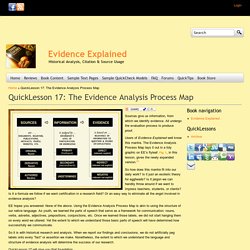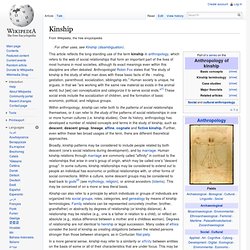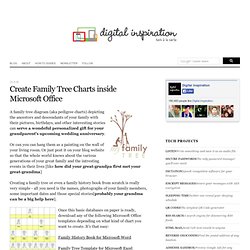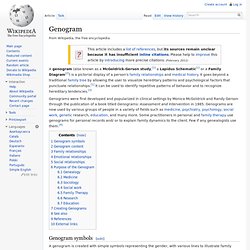Genealogy
> Odinkral
> Sites saved for later
> Organizational Level-Alignment
> Life
> Self
Synium - MacFamilyTree. QuickLesson 17: The Evidence Analysis Process Map. Sources give us information, from which we identify evidence.

All undergo the evaluation process to produce proof. Users of Evidence Explained well know this mantra. The Evidence Analysis Process Map lays it out in a tidy graphic on EE’s flyleaf. Fig. 1, in this lesson, gives the newly expanded version.[1] So how does this mantra fit into our daily work? EE hopes you answered: None of the above. So it is with historical research and analysis. QuickLesson 17 will give you that foundation. Sources This analytical element comes in many formats. Original Records: documents that represent the origin of a tangible source—the first time it was written or the first recorded utterance. Information The “facts” that our sources provide also come in three basic classes: Primary information: that is, information based on firsthand knowledge.
Evidence Evidence is our interpretation of information that we consider relevant to a particular research question. The Evaluation Process We correlate details. Item 3. Free Family History and Genealogy Records — FamilySearch.org. Genealogy. International Genealogical Symbols. Sooner or later, your research may take you over an ocean, and when it does, be prepared—you may receive information formatted differently, and it may contain unfamiliar symbols.

For instance, what do an “*”, an “o”, and a “+” remind you of? Use your imagination to see an egg, a ring, and a sword, and you will understand why some of these symbols represent birth, engagement, and death in various countries. And these symbols, which are commonplace in parts of Europe and South Africa, are becoming more frequent in America. And they are an efficient way to illustrate relationships. Why write more than you need! One of my first encounters with genealogical symbols was when I received the following report from a German researcher, who assisted in transcribing German records regarding my Miesse family. 1. .
* Els, 28.01.1743 2. .
* Els, -02.03.1694 + Els, 28.01.1772 & Els, 21.02.1736 3.
Kinship. This article reflects the long-standing use of the term kinship in anthropology, which refers to the web of social relationships that form an important part of the lives of most humans in most societies, although its exact meanings even within this discipline are often debated.

Anthropologist Robin Fox states that "the study of kinship is the study of what man does with these basic facts of life - mating, gestation, parenthood, socialization, siblingship etc.
" Human society is unique, he argues, in that we "are working with the same raw material as exists in the animal world, but [we] can conceptualize and categorize it to serve social ends.
"[1] These social ends include the socialization of children, and the formation of basic economic, political, and religious groups. Broadly, kinship patterns may be considered to include people related by both descent (one's social relations during development), and by marriage. Basic concepts[edit] Family types[edit] Kinship terminologies[edit]
Generationmaps. Create Family Tree Charts inside Microsoft Office. Couch mode print story A family tree diagram (aka pedigree charts) depicting the ancestors and descendants of your family with their pictures, birthdays, and other interesting stories can serve a wondeful personalized gift for your grandparent's upcoming wedding anniversary.

Or can you can hang them as a painting on the wall of your living room. Or just post it on your blog website so that the whole world knows about the various generations of your great family and the intresting events in their lives [like how did your great-grandpa first met your great-grandma] Creating a family tree or even a family history book from scratch is really very simple - all you need is the names, photographs of your family members, some important dates and those special stories[probably your grandma can be a big help here]. Once this basic databases on paper is ready, download any of the following Microsoft Office templates depending on what kind of chart you want to create.
Family Echo - Free Online Family Tree Maker. Free Family Tree, Genealogy and Family History - MyHeritage.com. Genogram. A genogram (also known as a McGoldrick-Gerson study,[1] a Lapidus Schematic[1] or a Family Diagram[2]) is a pictorial display of a person's family relationships and medical history.

It goes beyond a traditional family tree by allowing the user to visualize hereditary patterns and psychological factors that punctuate relationships.[1] It can be used to identify repetitive patterns of behavior and to recognize hereditary tendencies.[3] Genograms were first developed and popularized in clinical settings by Monica McGoldrick and Randy Gerson through the publication of a book titled Genograms: Assessment and Intervention in 1985.
Genograms are now used by various groups of people in a variety of fields such as medicine, psychiatry, psychology, social work, genetic research, education, and many more. Some practitioners in personal and family therapy use genograms for personal records and/ or to explain family dynamics to the client. Few if any genealogists use them.[4] Genogram symbols[edit]





